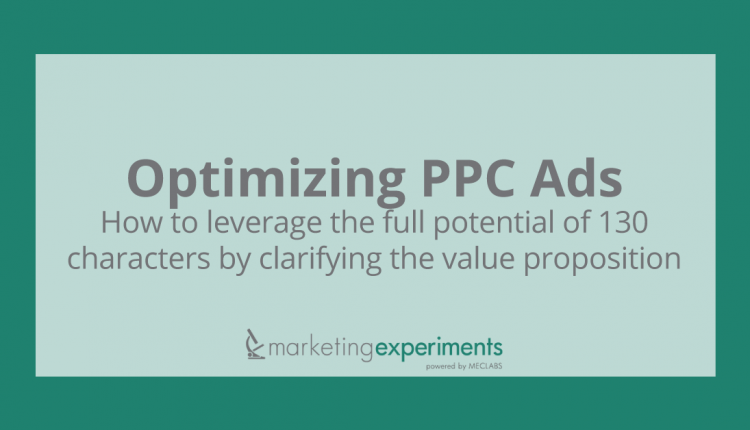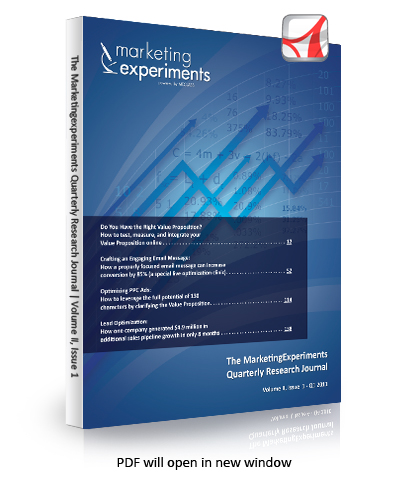Optimizing PPC Ads
How to leverage the full potential of 130 characters by clarifying the value proposition
Competition for a customer’s attention has been a roaming battle throughout the years. Newspapers. Radio. TV. But today, the front lines are in online search. As reported by our sister company MarketingSherpa, forecasts on the spending for search advertisement alone will break the $25 billion mark for the first time in 2011. But spending lots of money is never enough when it comes to gaining your customer’s attention. For as bad as an economy may be, you will never be the only one spending money to speak to your customers — especially in the case of PPC.
Addressing this current marketing challenge, Dr. Flint McGlaughlin covered the number one contributing factor to the success (or failure) of any PPC campaign. Often, many marketing departments can get swept up in the rigmarole of trying to stay current with all the new technological bells and whistles associated with search optimization, when only one thing really matters. Our research suggests that ensuring a PPC ad clearly communicates a value proposition is the single-most effective way to drive more qualified clicks.
During this live one-hour teaching session, Dr. McGlaughlin walked through a PPC experiment resulting in a 302% increase in projected profit, illustrating the craft of effectively expressing the value proposition in a PPC ad. He broke his teaching into three parts:
Part 1: The Primary Value Proposition of an Offer
“If you had just ten words to explain why people should buy from your company instead of another, what would you communicate?” Dr. McGlaughlin asks the audience. “Your answer to this question will determine the effectiveness of your value proposition.” Then, in an effort to help simplify this even further, he provided a breakdown of what makes a value proposition truly forceful:
Appeal – How much is this offer desired?
Exclusivity – Is this offer available elsewhere?
Credibility – How believable are your claims?
He walked through each one of these components explaining how to properly understand them in light of your “primary” value proposition, and then how to connect them to, what he called, the “sub-value proposition” of your PPC ad.
Part 2: The Sub-Value Proposition of a PPC Ad
At this point, Dr. McGlaughlin taught that for every action you desire a visitor to make (a click in the case of PPC), there must be an immediate promise of value that outweighs the cost of that action. Thus, he made an important distinction between the primary value proposition of an offer and the sub-value proposition of a PPC ad.
“And though these points of value are distinct,” he commented, “they rely upon the same factors of force: appeal, exclusivity, and credibility.” Further, in order to ensure that you are effectively crafting a PPC ad, you must measure a sub-value proposition by its appeal, exclusivity and credibility, and then communicate it throughout the entire conversion process.
He closed this part of the presentation with multiple “good” and “bad’ examples of PPC ads as they attempt to express an effective value proposition.
Part 3: Live Optimization of Audience-Submitted PPC Campaigns
Finally, because some of the material had a more theoretical leaning, Dr. McGlaughlin provided practical application to real-life PPC scenarios. Taking audience submissions of PPC campaigns, he gave live optimization advice and recommendations for testing, based on the principle taught in this session.
Download the MarketingExperiments Quarterly Research Journal:
View the clinic replay, or listen to the audio recording (mp3), to learn from our researchers as they present these important insights from 2010.

Presentation will open in new window
Credits:
Presenters
Dr. Flint McGlaughlin
Jon Powell
Tony Doty
Writers
Austin McCraw
Daniel Burstein
Technical Production
Joelle Parra
Nicole Evans
Cliff Rainer
Additional Contributors
MECLABS Conversion Group




